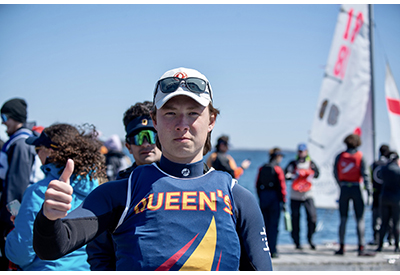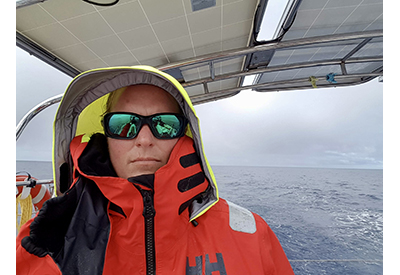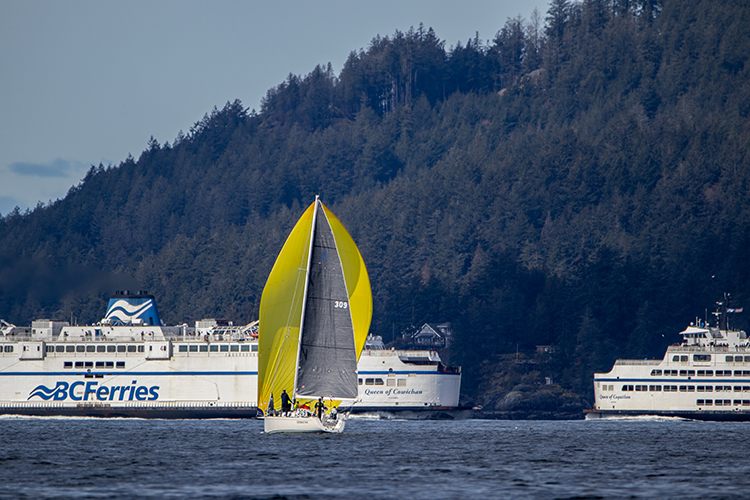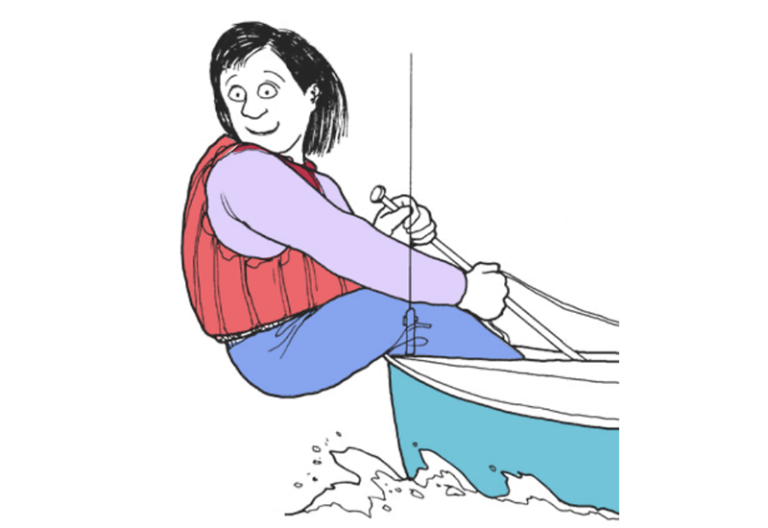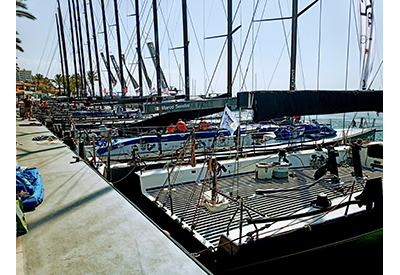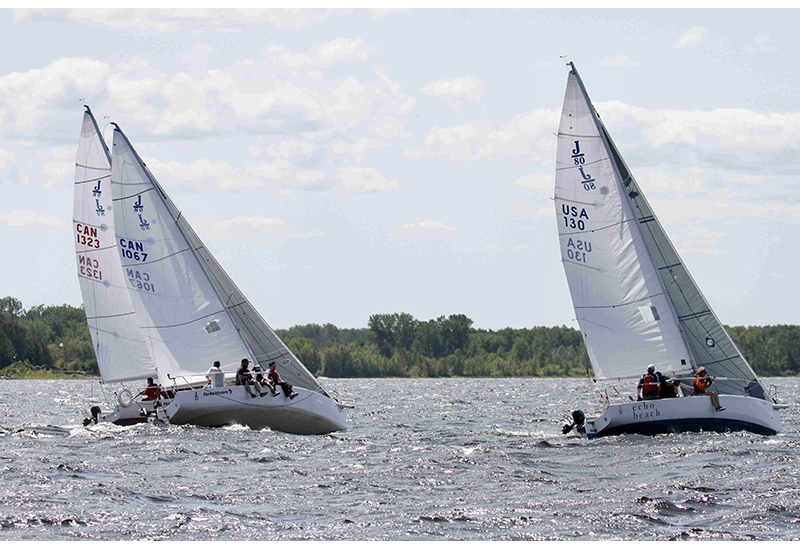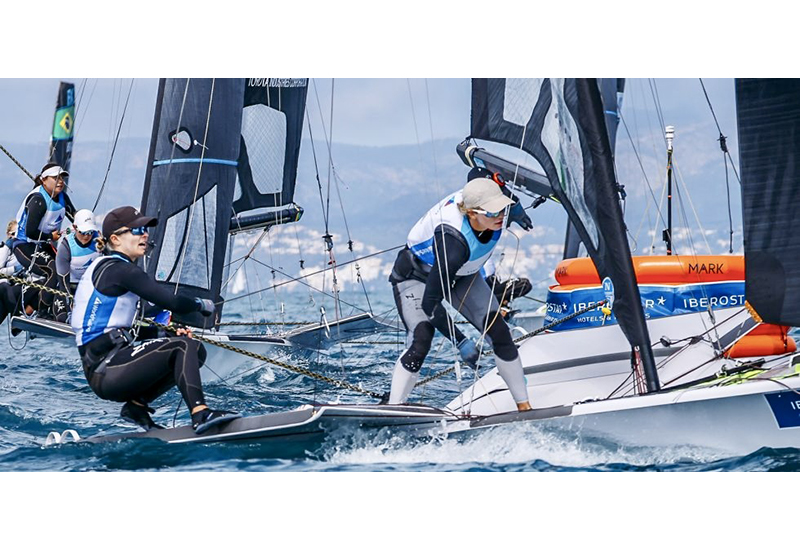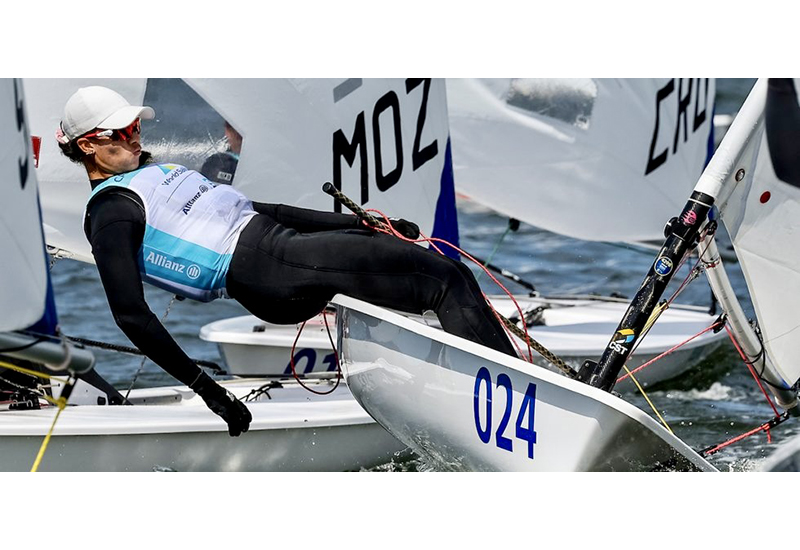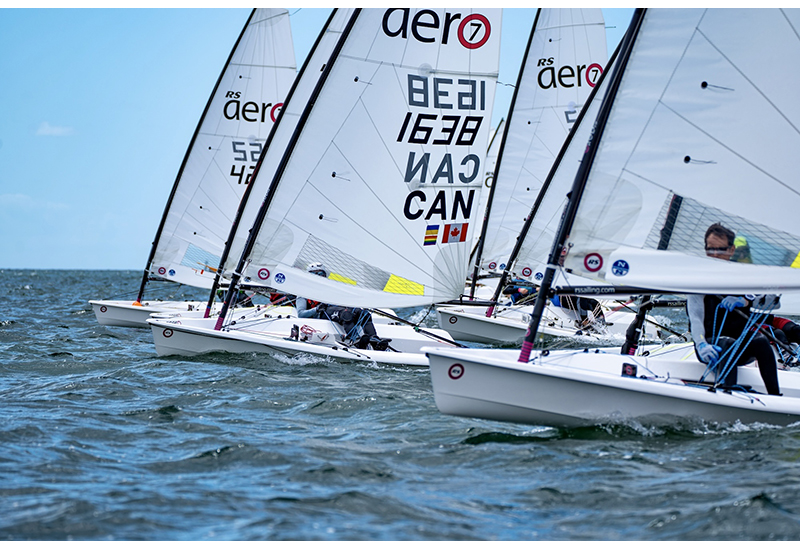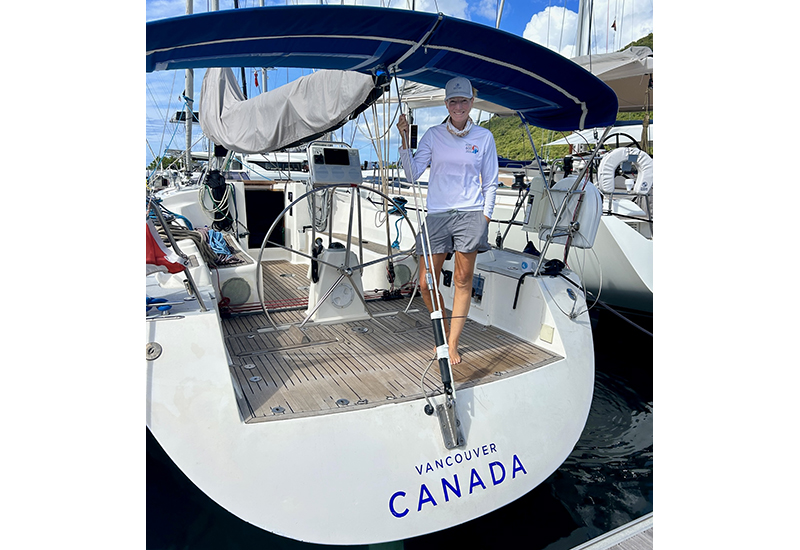Speed & Smarts: Ladder Rungs Part 1
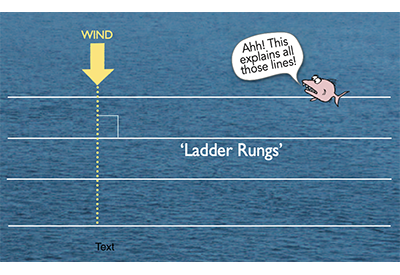
Mar 2, 2022
Ladder rungs are always parallel to each other and perpendicular to the direction of the wind in which the boats are racing (their ‘sailing wind’). The exact spacing between rungs usually doesn’t matter too much for most ladder rung concepts.
The race course for sailboats is similar to a playing field for baseball or football but in sailing there are no fouls lines or yard markers visible on the course. For critical boundaries like the starting line or zone around a mark, sailors must rely on their imagination and judgement.
Of course, most racers would love to see certain guides like laylines and start or finish lines painted on the water surface. But the most useful markers, at least for strategy and tactics, would be what sailors commonly refer to as ‘ladder rungs’.
Imagine a very wide ladder superimposed on the race course. The sides of the ladder are lined up parallel with the wind direction, and the ladder rungs are perpendicular to the wind (see photo). Boats sailing upwind have to climb up the ladder to get to the windward mark. Boats sailing downwind must climb down the ladder toward the leeward mark.
Though ladder rungs are invisible like all other sailing markers, they can help sailors understand a lot about wind shifts, their position in the race, favorite ends of the start and finish lines, and more.
Ladder rung principles
Ladder rungs are imaginary tools that sailors can use to judge the positions of boats on the race course and understand what happens when the wind shifts. This concept applies both upwind and downwind, whenever a boat’s proper course is to maximize its performance in a direction toward or away from the wind.
Ladder rungs don’t apply on reaches or when a boat overstands the next mark – therefore we will assume during this issue that boats are sailing within the laylines on windward or leeward legs. We will also assume that boats don’t lose distance when tacking or jibing – by doing this we can discuss ladder rungs without worrying about what tack each boat is on. Here are some very basic principles for starters.
Why care about ladder rungs?
Sailboat racing is a challenge because there are no lines on the playing field and you can’t see the wind. The concept of ladder rungs adds structure and logic to the sailors’ playing field and competition. It explains how many things work and helps with a number of strategic and tactical choices.
A good understanding of ladder rung theory will help you do a better job of:
1. Judging how you are positioned in the race. Are you 10th, or 20th? Closer to the front or the back? Knowing where you stand helps you make decisions about how much risk you should take at any point.
2. Assessing potential tactical moves. If you tack or jibe, can you cross in front of the boat on your hip? Where will you come out relative to that pack of boats a minute or two away? The answers to these questions may have a large bearing on the tactical choices you make.
3. Understanding how wind shifts work. Ladder rungs make it easy to understand why you should sail toward the next shift upwind and away from the next shift downwind.
4. Evaluating start lines, finish lines and gates. The favored end of a line or gate is the one that’s on a higher ladder rung if it ends a leeward leg, or on a lower ladder rung if it ends a windward leg.
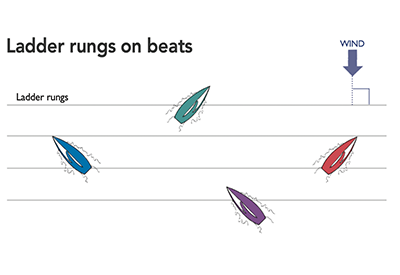 When you’re racing to a windward mark, the object is to climb up the ladder and get to higher and higher ladder rungs until you reach the mark (which is on the top rung). Therefore, boats that have progressed farther up the ladder (in a direction to windward) are ahead of boats that have not climbed as far.
When you’re racing to a windward mark, the object is to climb up the ladder and get to higher and higher ladder rungs until you reach the mark (which is on the top rung). Therefore, boats that have progressed farther up the ladder (in a direction to windward) are ahead of boats that have not climbed as far.
In this example, Green is ahead of Purple, and Red is behind Green. Blue and Red are on the same ladder rung; this means they’ve made equal progress to windward so they are even in the race.
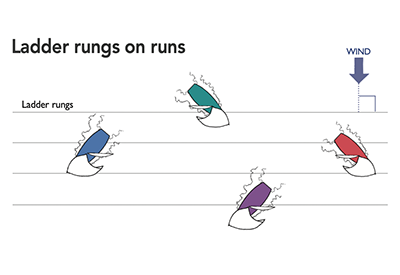 When you’re racing to a leeward mark, the object is to climb down the ladder and get to lower and lower ladder rungs until you reach the mark (which is on the bottom rung). Therefore, boats that have progressed farther down the ladder (in a direction to leeward) are ahead of boats that have not descended so far.
When you’re racing to a leeward mark, the object is to climb down the ladder and get to lower and lower ladder rungs until you reach the mark (which is on the bottom rung). Therefore, boats that have progressed farther down the ladder (in a direction to leeward) are ahead of boats that have not descended so far.
In this example, Purple is ahead of Green, and Blue is behind Purple. Blue and Red are on the same ladder rung; this means they’ve made equal progress to leeward so they are even in the race.
Next time – Ladder runs and windshifts
 Dave Dellenbaugh is the publisher, editor and author of Speed & Smarts, the racing newsletter. He was the tactician and starting helmsman on America3 during her successful defense of the America’s Cup in 1992 and sailed in three other America’s Cup campaigns from 1986 to 2007. David is also two-time winner of the Canada’s Cup, a Lightning world champion, two-time Congressional Cup winner, seven-time Thistle national champion, three-time Prince of Wales U.S. match racing champion and past winner of the U.S. Team Racing Championship for the Hinman Trophy. He is currently a member of the US Sailing Racing Rules Committee (and was its chairman from 2005-2008).
Dave Dellenbaugh is the publisher, editor and author of Speed & Smarts, the racing newsletter. He was the tactician and starting helmsman on America3 during her successful defense of the America’s Cup in 1992 and sailed in three other America’s Cup campaigns from 1986 to 2007. David is also two-time winner of the Canada’s Cup, a Lightning world champion, two-time Congressional Cup winner, seven-time Thistle national champion, three-time Prince of Wales U.S. match racing champion and past winner of the U.S. Team Racing Championship for the Hinman Trophy. He is currently a member of the US Sailing Racing Rules Committee (and was its chairman from 2005-2008).
You can subscribe to the Speed & Smarts newsletter HERE


